29 Pro Death Penalty Quotes by Prison Inmates
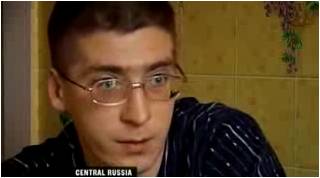
|
“There are crimes people commit when they are enraged or drunk – that’s one thing,” Biryukov explains, “But when a person consciously kills or tortures, when he molests young kids, when he trespasses all the moral boundaries – I do not think he should be allowed to live.” |
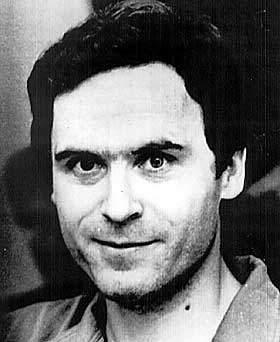
|
James Dobson: Do you deserve the punishment the state has inflicted upon you? Ted: That’s a very good question. I don’t want to die; I won’t kid you. I deserve, certainly, the most extreme punishment society has. And I think society deserves to be protected from me and from others like me. That’s for sure. James Dobson: There is tremendous cynicism about you on the outside, I suppose, for good reason. I’m not sure there’s anything you could say that people would believe, yet you told me (and I have heard this through our mutual friend, John Tanner) that you have accepted the forgiveness of Jesus Christ and are a follower and believer in Him. Do you draw strength from that as you approach these final hours? Ted: I do. I can’t say that being in the Valley of the Shadow of Death is something I’ve become all that accustomed to, and that I’m strong and nothing’s bothering me. It’s no fun. It gets kind of lonely, yet I have to remind myself that every one of us will go through this someday in one way or another. |
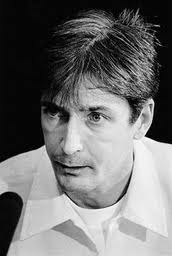
|
CASE: On the evening of July 19, 1976, Gilmore robbed and murdered Max Jensen, a Sinclair gas station employee in Orem, Utah. The next evening, he robbed and murdered Bennie Bushnell, a motel manager in Provo. He murdered these people even though they complied with his demands. As he disposed of the .22 caliber pistol used in both killings, he accidentally shot himself in the hand, leaving a trail of blood from the gun all the way to the service garage where he had left his truck to be repaired shortly before the murder of Bushnell. Michael Simpson witnessed Gilmore hiding the gun in the bushes, seeing the blood and hearing on a police scanner of the shooting at the nearby motel, wrote down Gilmore's license number and called the police. Gilmore's cousin, Brenda, turned him in to police shortly after he called her asking for bandages and painkillers for the injury to his hand. Gilmore gave up without a fight as he was trying to drive out of Provo. He was charged with the murders of Bushnell and Jensen, although the latter case never went to trial, apparently because there were no eyewitnesses. Pierre and Andrews became notoriously hated prisoners. They were particularly reviled on death row, especially by convicted murderer Gary Gilmore (also facing capital punishment and imprisoned at the same facility), whose final words to his fellow inmates before being taken to face the firing squad were, "I'll see you in Hell, Pierre and Andrews!" Gilmore is reported to have laughed at Pierre and Andrews as he passed by their cells. Gary Gilmore was executed on January 17, 1977 at 8:07 a.m. by firing squad at Utah State Prison in Draper, Utah. The night before, Gilmore had requested an all-night gathering of friends and family at the prison mess hall. On the evening before his execution, he was served a last meal of steak, potatoes, milk and coffee and a six-pack of beer; he consumed only the milk and coffee. His uncle, Vern Damico, who attended the gathering later claimed to have smuggled in three small, 50-millilitre Jack Daniel's whiskey shot bottles which Gilmore supposedly consumed. He was then taken to an abandoned cannery behind the prison which served as its death house. He was strapped to a chair, with a wall of sandbags placed behind him to absorb the bullets. Five gunmen, local police, stood concealed behind a curtain with five small holes cut for them to place their rifles through. When asked for any last words, Gilmore simply replied, "Let's do it!" The Rev. Thomas Meersman, the Roman Catholic prison chaplain, administered the last rites to Gilmore. After the prison physician cloaked him in a black hood, Gilmore uttered his last words to Father Meersman: "Dominus vobiscum" (Latin, translation: "The Lord be with you.") Meersman replied, "Et cum spiritu tuo ("And with your spirit" According to his brother Mikal Gilmore's memoir Shot in the Heart, Utah's tradition dictated that a firing squad comprise five men — four of them with live rounds, and one with a blank round, so that each of the shooters could cast doubt to having fired a fatal shot. However, upon inspecting the clothes worn by Gary Gilmore at his execution, Mikal noticed five holes in the shirt — indicating, he wrote, that "the state of Utah, apparently, had taken no chances on the morning that it put my brother to death" Gilmore had requested that, following his execution, his eyes be used for transplant purposes. Within hours of the execution, two people received his corneas. Most of his other organs were used for transplants as well. His body was sent for an autopsy and cremated later that day. The following day, his ashes were scattered from an airplane over Spanish Fork, Utah. On October 7, 1976 at 10:13 AM, the jury retired to consider the verdict; by mid-day, they had returned with a guilty verdict. Later that day, the jury unanimously recommended the death penalty, because of special circumstances to the crime. At the time, Utah had two methods of execution — firing squad or hanging. Gilmore elected to be executed by firing squad, saying, "I'd prefer to be shot." The execution was set for November 15 at 8 AM. Gilmore received several stays of execution, brought about against his expressed wishes by the efforts of the American Civil Liberties Union (ACLU). The last of these occurred just hours before the re-scheduled execution date of January 17. That stay was overturned at 7:30 AM, and the execution allowed to proceed as planned. At a Board of Pardons hearing in November 1976, Gilmore said of the efforts by the ACLU and others to prevent his January 17, 1977, execution: "They always want to get in on the act. I don't think they have ever really done anything effective in their lives. I would like them all — including that group of reverends and rabbis from Salt Lake City — to butt out. This is my life and this is my death. It's been sanctioned by the courts that I die and I accept that." |
|
Summary: David Duren was convicted and sentenced to death for the abduction, robbery, and murder of 16 year old of Kathleen Bledsoe in 1983. Bledsoe was parked in a secluded area with 17 year old Charles Leonard, when Duren and Richard Kinder approached the car with a gun. They tied the two together, forced them into the trunk of the car, drove around for a couple of hours, then stopped. Standing approximately seven feet from the tied teenagers, Duren raised his pistol, aimed it, and squeezed the trigger. The gun discharged, striking Kathleen Bedsole in the head. She collapsed, pulling down Leonard with her. Duren lowered the gun and continued firing, striking Leonard in the legs, hips, and chest. Apparently believing both teenagers were dead, Duren walked back to the car and drove away with Kinder. Charles Leonard, still alive, extricated himself from the rope that bound him. Though riddled with three bullet wounds, Leonard managed to make his way to a home nearby and police were called. Kinder and Duren were apprehended shortly thereafter in Huffman, Alabama. Leonard identified Duren as the man who had shot him and testified at trial. Upon subsequent questioning, Duren confessed twice to his participation in the crime. He also led officers to the crime scene and pointed out where he had hidden the murder weapon. Kinder was sentenced to life in prison without parole. While on death row, Duren became a born-again Christian and wrote several articles recounting his mistakes in life. He opposed all last-minute appeals to avoid the electric chair. "I can
drag it out another three years or however long it took them to decide
it,"
Duren told The Birmingham News Wednesday. "But
that wouldn't be fair to the victims' family. It wouldn't be fair to my
family." |
|
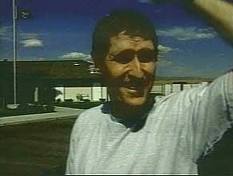
|
Surprisingly, Fain said in a phone interview that he does support the death penalty, despite serving 18 years in a 7' x 12' cell. "If they're guilty, yeah. I'm a Christian and I believe in the Bible. Fred disagrees and that's ok. I love him anyway," Fain said. [Thursday 17 November 2011]
Fain said he knows Paul Ezra Rhoades well, and he supports the execution plans. "I wish I could say he was innocent. I can't. He knows the Lord. I'm fully confident he's going out of this world and into a better one," Fain said. Fain is living in Idaho and recently married a
woman he met at his church. |
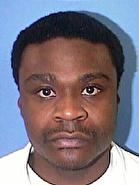
|
Curry, who became a Christian in prison, told the Austin American-Statesman in an interview this week that he was ready to accept the death sentence. "I believe I deserve to die," he said. "They say you reap what you sow. When you live a life -- especially out on the streets -- you have a certain mentality that if someone wrongs you, then that person pays with their life." Final Words: "I pray with the help of God that you will forgive me for the pain I caused your family. I am truly sorry. I wish I could take it back, but I just pray and ask that you forgive me." |
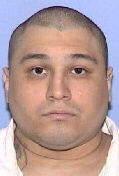
|
In a statement while strapped to the death chamber gurney, he thanked his family and friends and expressed his love for them. "And thanks for the friends at the Polunsky Unit that helped me get through this that didn't agree with my decision and still gave me their friendship." In a handwritten statement he prepared about two hours before his death, Martinez acknowledged that "I have caused so much pain to so many people. I especially want to apologize to my victim's family for the life I took. I am only taking full responsibility for what I have done. I am truly sorry and, though some may not believe this, God only knows the truth and for that I know that's all that matters. I am ashamed for what I've done!" |
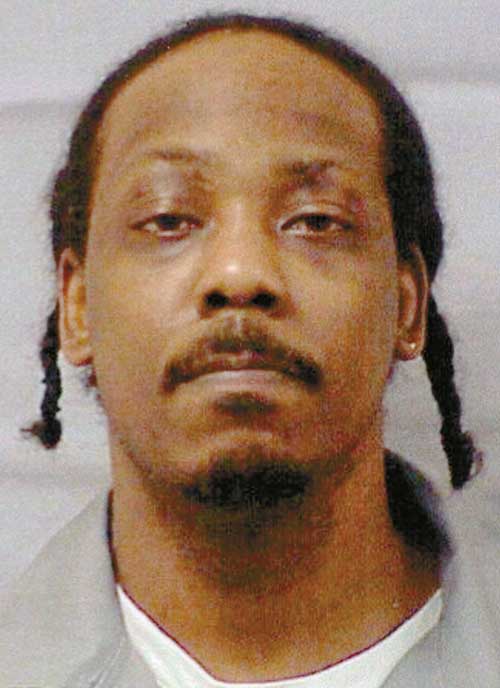
|
Jones' final statement, written in his own hand: "Praise God! Every day is a day to give the Lord thanks for all He's done! To my Beautiful Family, Friends, and all those whose been in prayer, in thought and support, I want to say thank you from the bottom of my heart. To my Family, you will never truely know how your love, prayers, and forgiveness has sustained me all these years, to all my friends and supporters, especially my Beautiful Angels at St. Louis University, your courage and conviction is inspiring, keep the struggle alive. To my mother who truly has been hurt the most, your love and strength I carry with me always. Take care of my son. I"m finally free and I'm going home to grandmother now. I love you all and God Bless. Donnie." |
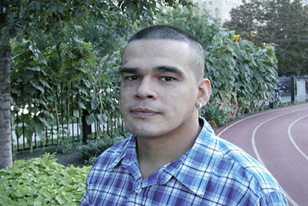
|
Dugan’s conviction was part of a tangled legal saga that saw two other men — Rolando Cruz and Alejandro Hernandez — get convicted and sentenced to death before ultimately being exonerated. The case was one of the many that led then-Gov. George Ryan to put a moratorium on the death penalty in 2000. Former death row inmate Rolando Cruz also favors keeping the death penalty. “It’s sad that there’s a death penalty in this society that we exist in right now; unfortunately, we are forced to have that as a last means tool to attempt to decrease the outrageously increasing numbers of murders in the United States,” Cruz said. “The problem we’re having is the implementation.” Cruz, 47, was twice convicted and sentenced to death for the 1983 rape and murder of 10-year-old Jeanine Nicarico. He was acquitted and later pardoned. Years earlier, though, Brian Dugan, who was already in jail for raping and killing another girl and a woman, admitted to the crime. Dugan plead guilty to the crime in 2009. He said he and other former death row inmates should be allowed one-on-one audiences with Gov. Quinn to discuss the issue. “I think the state government in Illinois owes me that opportunity and owes all of us former death row inmates. The government and high courts and joint committees owe us the opportuntity to speak in front of those who made those laws.” Cruz, who is rearing three young children in Wisconsin where he is completing a degree in psychology, working and playing in a pool league, said he and other former death row inmates have been used as pawns of anti-death penalty groups. He said he and other inmates have received small stipends of about $100 per appearance. But cases can be made for the punishments, he said, citing last week’s shooting in Tucson as an example. |

|
"I just want to say that I am very sorry for the pain that I have caused. I pray the family of Jerry Haney can find it in their heart one day to forgive the pain I have caused them. I pray they find peace and love in the Lord Jesus Christ as I have, because that's the true peace. I thank the Lord Jesus Christ that I'm fixing to see him face to face." |
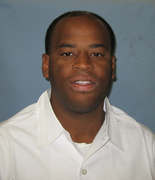
|
Summary: 25-year-old Angela Cagle worked as a clerk in a Huntsville convenience store. Mason entered the store in the early morning, directing Cagle to a backroom at gunpoint. Accordng to Mason, he was trying to force her to tell him how to turn off the camera when he ordered her to take her clothes off. He then shot her in the face twice with a handgun. Mason claimed the first shot just went off, and the second shot was to keep her from identifying him. He then opened the cash register and fled. A few days after the murder, an unidentified man later told police that Mason committed the crime. The informant described the gun used, told police that Mason was "out of control" and "trying to make a name for himself," and then led authorities to Mason's car. Inside, police found a gun later determined to be the murder weapon. After he was arrested, Mason confessed to committing the murder. The jury voted 10-2 to sentence him to death, a recommendation the trial court accepted. Derrick Mason apologized to Angela Cagle's mother while strapped to a prison gurney before he was executed Thursday night for the 1994 slaying of Cagle at a Huntsville convenience store. "I would like to apologize to Mrs. Cagle's mother for the pain I caused her," Mason, 37, said minutes before a lethal dose of drugs began flowing into his veins. Four Mason family members and a family friend leaned on each other as they witnessed the procedure. Mason told them in his last statement to remember the Bible verse Joshua 1:9. The verse reads: "Have not I commanded thee? Be strong and of good courage; be not afraid, neither be thou dismayed: for the Lord thy God is with thee whithersoever thou goest." |
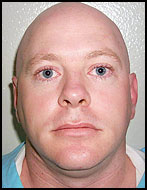
|
Members of the victim's family witnessed the execution from a separate room. Department of Corrections spokesman Larry Traylor would not identify them or say how many family members were there. Patterson's mother, father, sister, brother and two daughters visited him earlier in the day, Traylor said. There were no protesters outside the prison. Final Words: "I want it to be known that my heart goes out to the Aldridge family and all that I put them through. I pray that they (the families) will all find God as I have found him. I am at peace now and ready to meet my maker. God bless each and every one of you who is here tonight." |
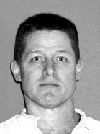
|
"Yes. I would like to address the victim's family. I received your poem and I ma very grateful for your forgiveness. I still want to ask for it anyway. I have Jesus in my heart and I am sorry for any pain I caused you all. Thank you for your forgiveness. I am sorry. Ashlee, Pam -- I am going to miss you all. I love you all. Give everybody my love. Give everybody my love, O.K.? Mother, James, Justin, Corey, Brent, grand-babies and Daddy - I love you Pam. I love you Ashlee, Pammy and Irene. I will see you all on the other side. Couple friends on death row who have helped me; Shy town and Crazy Jay...I love you all and for all your support. Uncle Ray too. I am saved and I am going home, O.K.? You all stay strong. You all stay strong. That is all." |
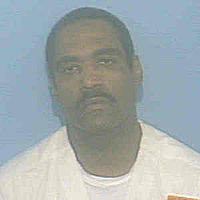
|
"I know it's been 20 years of pain and hurt, but during those 20 years I suffered, too. I cared and I loved, too, for Maxine and Brandy. It began with a syringe in my arm and this day is ending with a needle in my arm. It's come full circle." He thanked his attorneys and singled out four death row inmates to "hang in there and stay strong. Take care, 'cause I'm coming home. Lord, hallelujah. Yes, thank you." |
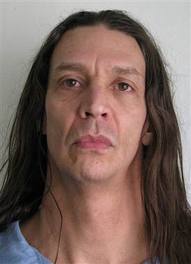
|
The decision has prompted Haugen, 49, to label the governor a coward, saying Mr Kitzhaber didn't have the guts to put him to death. "I'm going to have to get with some serious legal experts and figure out really if he can do this," Haugen said. "I think there's got to be some constitutional violations. Man, this is definitely cruel and unusual punishment. You don't bring a guy to the table twice and then just stop it." [Monday 28 November 2011] |
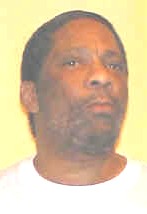
|
Summary: David A. Manning, age 23, was working alone at a service station in Toledo when Clark entered armed with a .32 caliber handgun and demanded money. After handing over $60 to Clark, Manning was shot once in the chest, killing him. Three days later, Clark was arrested on bank robbery charges. A .32 caliber handgun was found on his person. In jail, Clark attempted to hang himself. After his release from the hospital, Clark admitted to the shooting of Manning, but claimed that Manning had come at him with a pipe during the robbery. This was one in a string of robberies in a two-week period committed, according to Clark, to support a drug habit. Clark first robbed one victim at gunpoint (Kim Reno - January 8, 1984), then killed two victims (Donald Harris - January 12, 1984, and David Manning, January 13, 1984) and finally seriously wounded a fourth victim (Robert Roloff - January 16, 1984). Clark has a long criminal history, and was also sentenced to life imprisonment for the murder of Donald Harris. In his final statement, Clark said, “I would like to tell them young brothers and sisters also all over the world, do not let drugs ruin your life, ruin your body, and destroy your mind. Today my life is being taken because of drugs. If you live by the sword, you die by the sword.” After a long speech in which he thanked his family and friends, apologized to his victims’ families, and preached against the dangers of drugs, Clark quoted from the Martin Luther King, Jr., “I Have a Dream” speech in declaring himself: “Free at last. Free at last. Thank God Almighty, I am free at last.” Clark made a final statement apologizing to his victims' families and saying "I would like to say to family and friends that I didn't get to talk to, ... that was wondering how I felt, I would like them to know that I asked God to forgive me, that I asked the Lord to save me from my sins. And I asked God to forgive those who are participating in this here today." |
|
Dennis
Gentry, executed April 16, 1997, for the highly premeditated murder of his
friend Jimmy Don Ham. During his final statement, Gentry said, "I’d like to thank the Lord for the past 14 years (on
death row) to grow as a man and mature enough to accept what’s happening here
tonight. To my family, I’m happy. I’m going home to Jesus." As the
lethal drugs began to flow, Gentry cried out, "Sweet
Jesus, here I come. Take me home. I’m going that way to see the Lord." We
cannot know if Gentry or the fictitious Poncelet or the two real murderers from
the DMW book really did repent and receive salvation. But, we do know that St.
Aquinas advises us that murderers should not be given the benefit of the doubt.
We should err on the side of caution and not give murderers the opportunity to
harm again. Indeed, as Dr. W.H. Baker confirms in his On Capital Punishment
(Moody Press, 1985), biblical text finds that it is a violation of God’s
mandate not to execute premeditated murderers - and nowhere does
the text contradict this finding. |
|
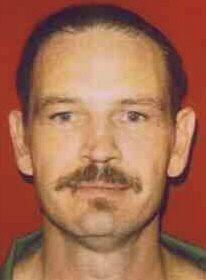
|
Then a brown hood was placed over Tucker's head and an electrician checked the long, black cord that ran from the ceiling of the death chamber to the wooden chair. The electrician nodded at the warden and less than a minute later, a breaker fell with a thump. Tucker's body jerked upwards, then the breaker was shut off. More current was sent through Tucker's body for about two minutes before he was pronounced dead at 6:11 p.m. Tucker was executed for killing 54-year-old Rosa Lee "Dolly" Oakley in her Sumter County home in June 1992. He stole $14 from Oakley, then shot her twice in the head. Tucker said he needed money to help his pregnant wife. He also was sentenced to death for killing 21-year-old Shannon Mellon in Calhoun County six days later. Mellon's hands and legs were bound and she was shot three times in the head. Tucker took her car and $20. Tucker, 47, is the first inmate in the nation to go to the electric chair in more than a year, and the first to be electrocuted in South Carolina since 1996. The state allows inmates to choose lethal injection, but Tucker's lawyer said he felt if he made a choice, he would be condoning his own death. Final Words: Tucker's attorney, Teresa Norris of Columbia, read his final statement. "To everyone, I have thought of a million things to say, but they can all be summed up like this. To those I have harmed, my abject apologies and regrets. I am ashamed. To those who must remain and deal with this insane world, my condolences. But be of good cheer. Christ has overcome the world! I know that my redeemer lives. I am leaving this world with a cheerful attitude. Hallelujah." |
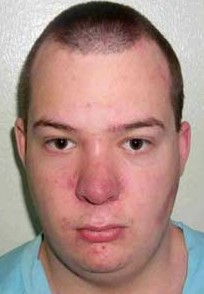
|
Summary:
Brandon Wayne Hedrick was executed in Virginia's electric chair last night for the 1997 slaying of a 23year-old Lynchburg woman. Hedrick, 27, was pronounced dead at 9:12 p.m. in the execution chamber at the Greensville Correctional Center, said Larry Traylor, Virginia Department of Corrections spokesman. Asked if he would like to make a last statement, Hedrick said: "I pray for everybody that believes in Jesus Christ in heaven, and I pray for the people that are unsaved that they will accept Christ because they know not what they do and will accept Christ one day. I am ready to go and be free." Hedrick was the first person electrocuted in the United States in more than two years, and the first in three years in Virginia. Only four of 72 Virginia killers have chosen the chair since Jan. 1, 1995, when they were given the option of injection. The electrocution for the murder of Lisa Crider -- the mother of a 5-year-old boy and slain on Mother's Day -- was performed without complication. Earlier the U.S. Supreme Court turned down Hedrick's bid for a stay and Gov. Timothy M. Kaine said he reviewed a clemency request and found no reason to intervene. Hedrick may have chosen electrocution, his lawyer said, because of concerns about pain accompanying lethal injection. Shortly before 9 p.m., Hedrick, his head freshly shaved, was led into the execution chamber. He appeared calm, wearing dark-blue prison pants with the right leg cut off at the knee and a light-blue shirt with the sleeves cut off. He was ushered into the electric chair and a half-dozen execution team members secured him stiffly upright with leather and nylon straps on his limbs and torso before asking if he had any last words. A metal device holding a sea sponge soaked in brine was then attached to his right calf, and a wide strap with a hole for his nose but covering his eyes and mouth secured his head to the chair. A metal cap holding another brine-soaked sponge was strapped on the top of his head. Power cables were then connected to the head and leg. A prison official turned a key on the wall activating the system and an execution team member viewing the chair through a one-way window pressed the execution button. It was about 9:02 p.m. when Hedrick's body jumped up straight, straining against the straps, his fists clenched. A small amount of smoke briefly rose from his leg. His body briefly relaxed between the two 90-second cycles of electricity. Each cycle starts with about 1,800 volts at 7.5 amps for 30 seconds and then 60 seconds of about 240 volts at 1.5 amps. His body jumped and leg smoked at the start of the second cycle. After five minutes, a physician entered, put a stethoscope to Hedrick's chest and pronounced him dead. The electrocution capped the events of May 11, 1997, when Crider was slain at the end of a nightmarish ordeal. Crider was abducted about 1 a.m. by Hedrick and a friend, Trevor Jones. The two were high on bourbon, marijuana and crack cocaine. Crider was abducted from Jones' apartment, robbed, put in Jones' truck and driven around before she was raped and then shot to death at short range with a shotgun near the James River in Appomattox County. Hedrick confessed to pulling the trigger. Jones, 28, was sentenced to life in prison. In their appeal and clemency petition, Hedrick's lawyers contended, among other things, that he may have been retarded and that he received incompetent representation from his trial lawyers. Rob Lee, one of Hedrick's lawyers, said he did not believe Hedrick was trying to make a statement by choosing electrocution. "It's not like there was one rational reason," he said. Lee said he believes Hedrick made the choice, at least in part, because he feared pain from lethal injection.
|
|
Even after 11 years of appeals, when convicted murderer Charles Troy Coleman was finally executed in September of 1990, the deterrent effect of the death penalty was clearly seen and reported in the news. On September 10, the day of Coleman’s execution, the Daily Oklahoman quoted fellow condemned murderer Howard Marquez as saying, “I felt the fear. I felt fear for my life.” Another death row inmate, Robert Grady Johnson, one of two men convicted of cold-bloodedly killing four people in the 1984 Geronimo Bank massacre, said after Coleman’s death by injection, “Several people here are saying, ‘I don’t have a chance. I’m going to be up there (in the death chamber) too.’” Johnson further said, “People here are scared to death.” |
|
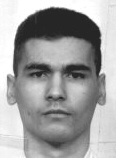
|
Final Words: "Today I go home to the Lord. But first I have to say something. I am real sorry. I took a family member's life and I shouldn't have. I hope that you can move on. I'm just sorry. I can't bring anyone back. I would if I could. I won't ask for your forgiveness. God will be my judge." Flores then turned and expressed his love to his friends and relatives, including his sobbing mother and sister. "Be strong and I will see you all, hopefully not soon. Keep your head up." |
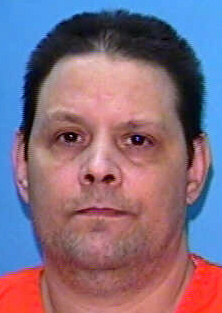
|
After the Supreme Court affirmed his conviction in 2002, Ocha filed a motion with the trial court to drop his appeals and dismiss his attorneys. In May, the Florida Supreme Court ordered the trial court to hold a hearing on his competency. When it ruled June 11 that Ocha was competent, he discharged his state lawyer, Mark Gruber. Gruber said he fought to get Ocha ruled incompetent. "He had demonstrated the kind of behavior that was at time erratic," Gruber said. In a letter to Assistant Attorney General Stephen D. Ake, Ocha asked that his execution be carried out without delays. "Sir I wish for my execution to come swift and unhampered." Hill was scheduled to meet with his client Monday, but said he did not expect to file any motions for Ocha. "He seems more than coherent," Hill said.
Final Words: "I would like to say I apologize to Carol Skjerva, the
girl that I murdered, her family and her friends. This is the punishment that I
deserve. I'm taking responsibility for my actions. I want everybody to know I'm
not a volunteer but this is my responsibility I have to take." In a
written statement, Ocha stated, "I unjustly took
the life of Carol Skjerva. I have made my peace with my God and go now to face
His judgment.” |